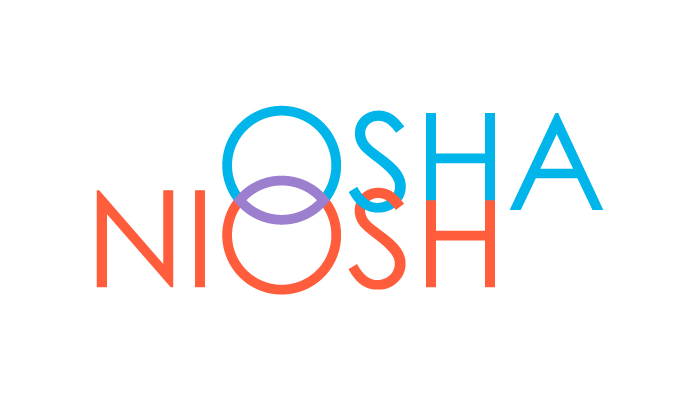We use cookies to make your experience better. To comply with the new e-Privacy directive, we need to ask for your consent to set the cookies. Learn more.
Differences Between OSHA and NIOSH (And How They Work Together)
Love it or hate it, every warehouse manager knows what OSHA does(OSHA stands for Occupational Safety and Health Administration). But OSHA isn’t the only federal organization dedicated to preserving the health of American workers. There’s also the National Institute for Occupational Safety and Health (NIOSH).
So what's the difference between OSHA and NIOSH? Why does the United States need two separate institutions that seem to have the same mission? The answers to these questions can help every warehouse manager understand the regulations that keep their workers safe. 
-
OSHA and NIOSH are divisions of two separate government entities.
OSHA is an office within the Department of Labor, while NIOSH is governed by the Center for Disease Control and Prevention. These organizational loyalties help to explain the different — but closely related — missions served by each organization.
-
OSHA creates and enforces regulations.
Under the OSH Act of 1970, OSHA was charged with the responsibility to create enforceable safety rules that employers must follow. Anyone who's spent time in management will be familiar with these rules, commonly known as OSHA Standards.
Enforcement is OSHA’s other main task. The agency has been given power under the law to levy fines and even take serious violators of OSHA Standards to court.
-
NIOSH is a research and education institution, not a legal enforcement agency.
While OSHA creates and enforces regulations, NIOSH focuses its attention on pushing the scientific field of occupational safety forward. They share the results of their research through robust education programs. They even provide workplace training to improve safety at businesses.
In their latest Strategic Plan Outline, NIOSH lists three goals: They will "conduct research to reduce work-related illnesses and injuries..., promote safe and healthy workplaces through interventions, recommendations, and capacity building..., and enhance international workplace safety and health through global collaborations."
-
The creation of both NIOSH and OSHA was not accidental.
The writers of the OSH Act of 1970 knew that improving safety at work would require a regulatory agency as well as a research institution. That law mandated the creation of both NIOSH and OSHA, with their complementary missions specified at the outset.
Over the nearly-50 years of their existence, OSHA and NIOSH haven't always coordinated perfectly. But in the wake of the 2010 Deepwater Horizon oil rig disaster, both agencies worked closely together to protect staff involved in cleanup efforts.
The lessons learned during that project have ushered in an era of unprecedented information-sharing between OSHA and NIOSH. In 2012, OSHA spokesperson Kimberly Darby told the magazine Safety & Health that her organization and NIOSH were working together "more closely than ever."
So there is a very clear difference between OSHA and NIOSH; but the agencies work together to help employers create the safest workplaces possible.
References:
"About OSHA." OSHA. Occupational Safety and Health Administration, United States Department of Labor, n.d. Web. 25 Oct. 2016.
Morrison, Kyle. "Safety + Health." National Safety Council, 1 March 2012. Web. 25 Oct. 2016.
"NIOSH Strategic Plan Outline 2010-2015." CDC. National Institute for Occupational Safety and Health Education and Information Division, 6 June 2014. Web. 25 Oct. 2016.
